Abstract
A solid-phase immunofluorescence assay was evaluated for the identification of viruses isolated in tissue culture, with influenza virus as a model. Purified immunoglobulin G (IgG) from hyperimmune rabbit sera specific for contemporary strains of influenza A or B was covalently attached to microscopic plastic beads to capture virus. Fluorescein isothiocyanate (FITC)-conjugated antibodies of different specificities were then reacted with bound antigen, and the resulting complexes were quantified in a suitable filter fluorometer. The assay, with appropriately absorbed FITC-conjugated second antibody, reliably identified virus present in harvests from cell cultures infected with clinical specimens. For influenza A (H1N1) virus, sensitivity of detecting antigen was about 8- to 32-fold less when an FITC-conjugated monoclonal Igg antibody pool specific for epitopes in three different antigenic sites on influenza hemagglutinin was used as the second antibody as compared to when IgG from hyperimmune sera specific for virus or its components was used as the second antibody. The immunofluorometric assay provides a method for quantitative detection of viral antigen in tissue culture fluids and objective identification of virus type and subtype with FITC-conjugated reagents.
Full text
PDF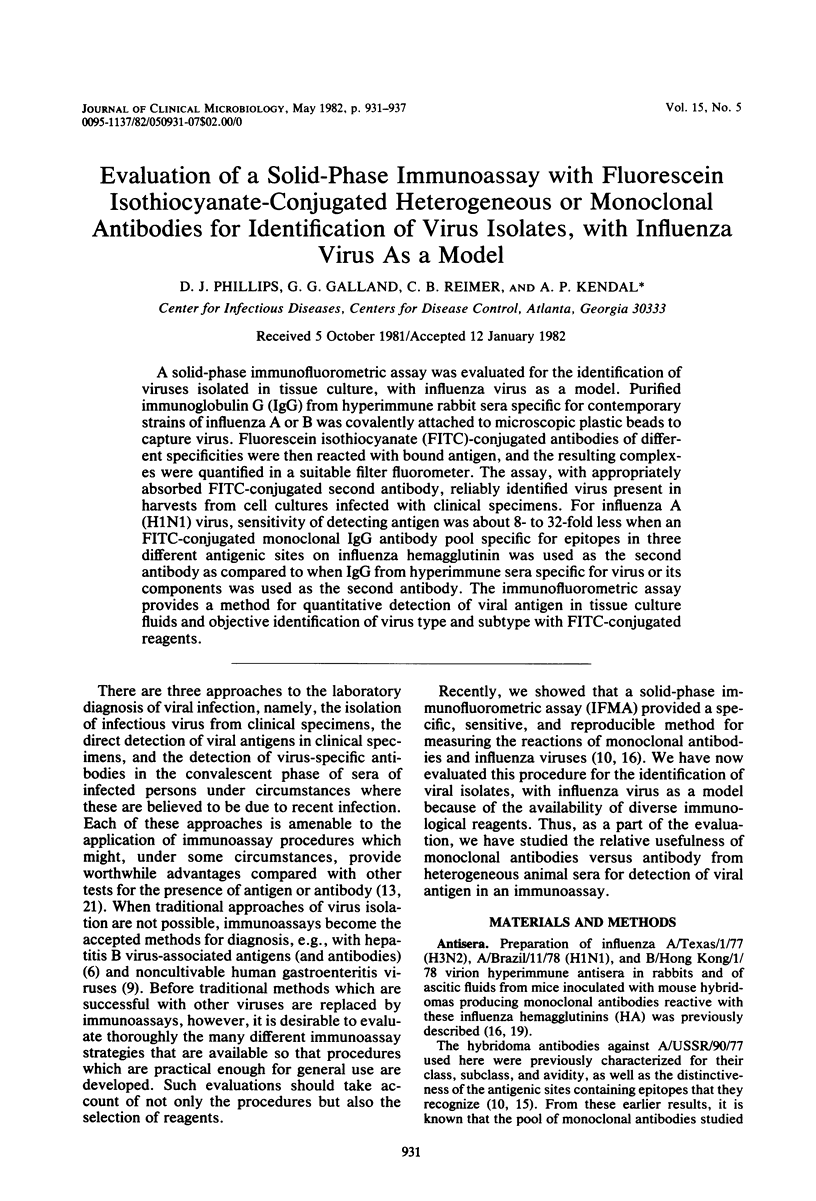
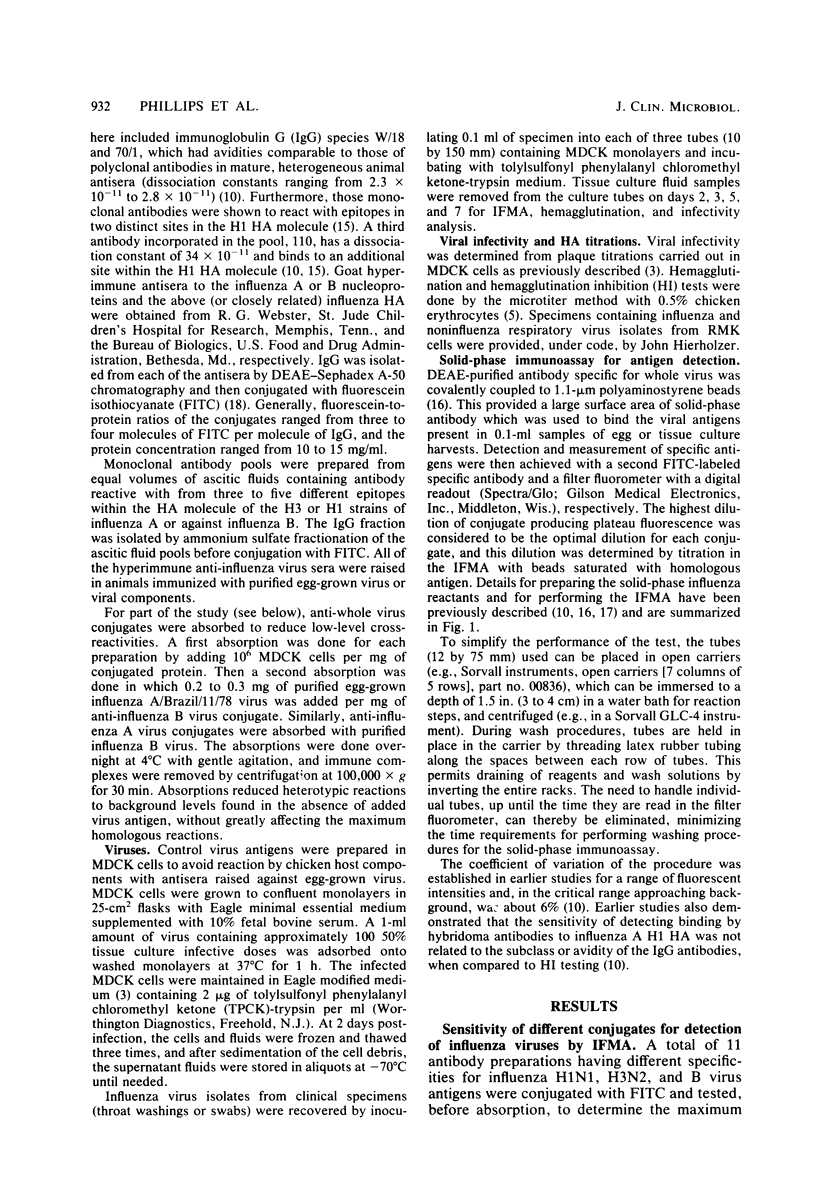
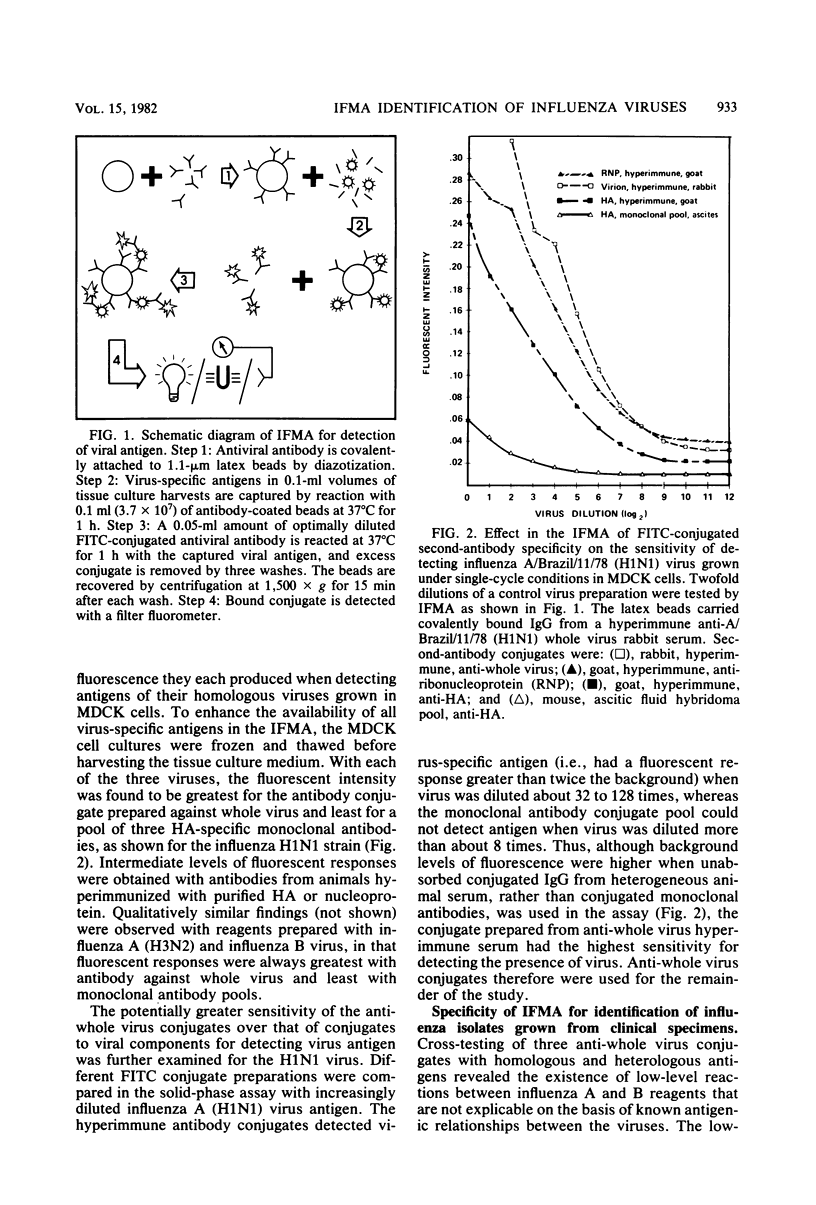
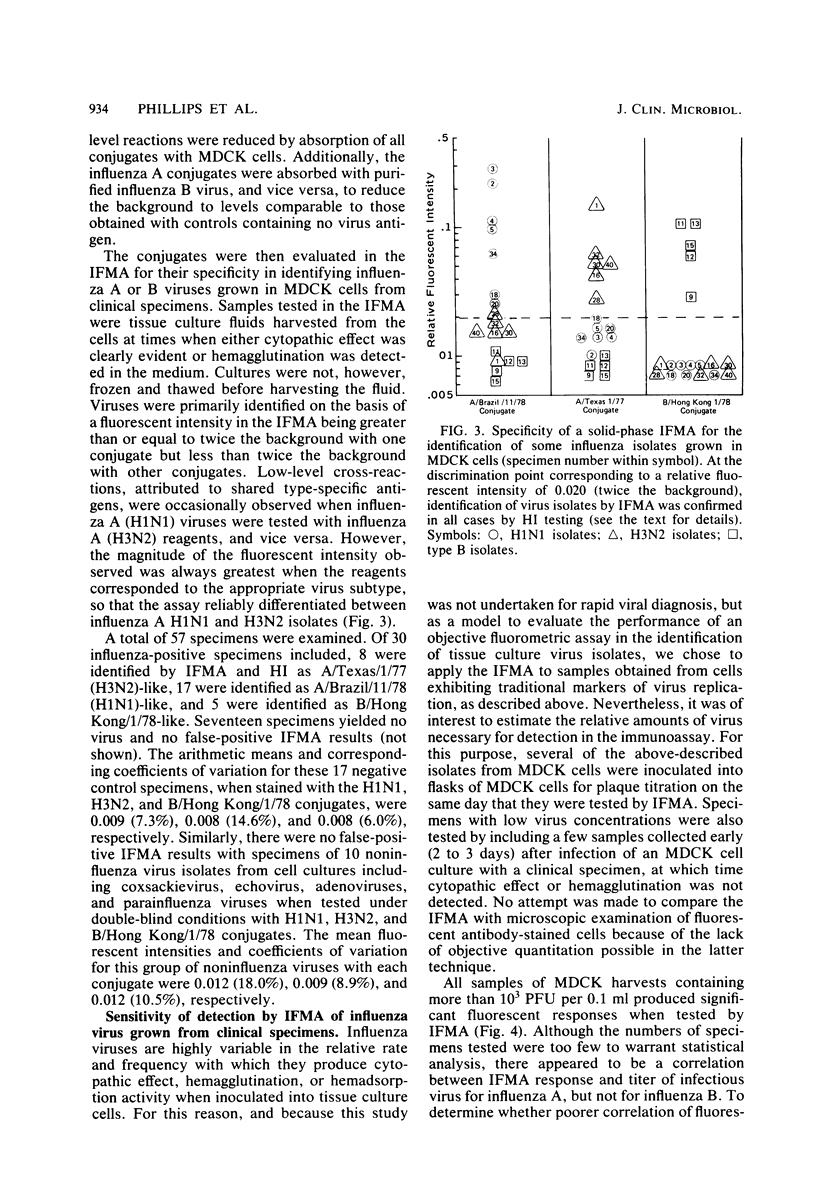
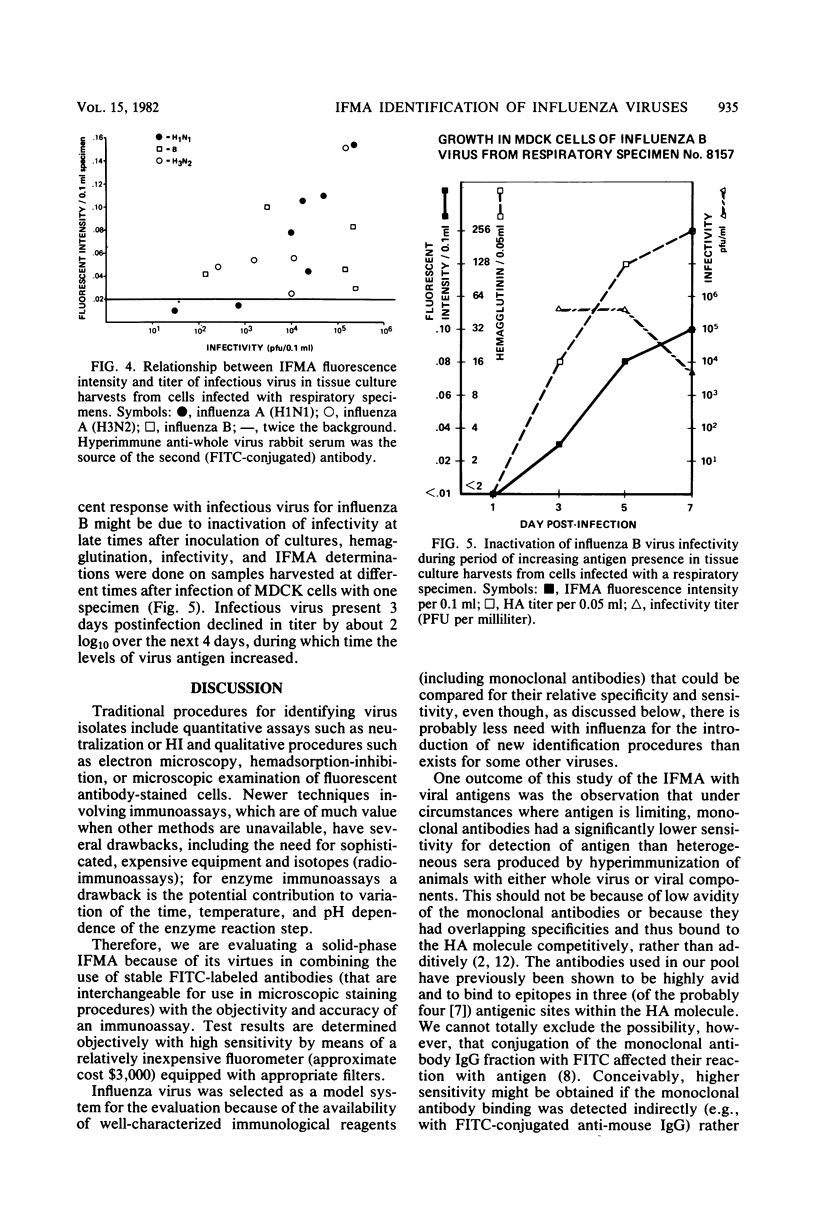
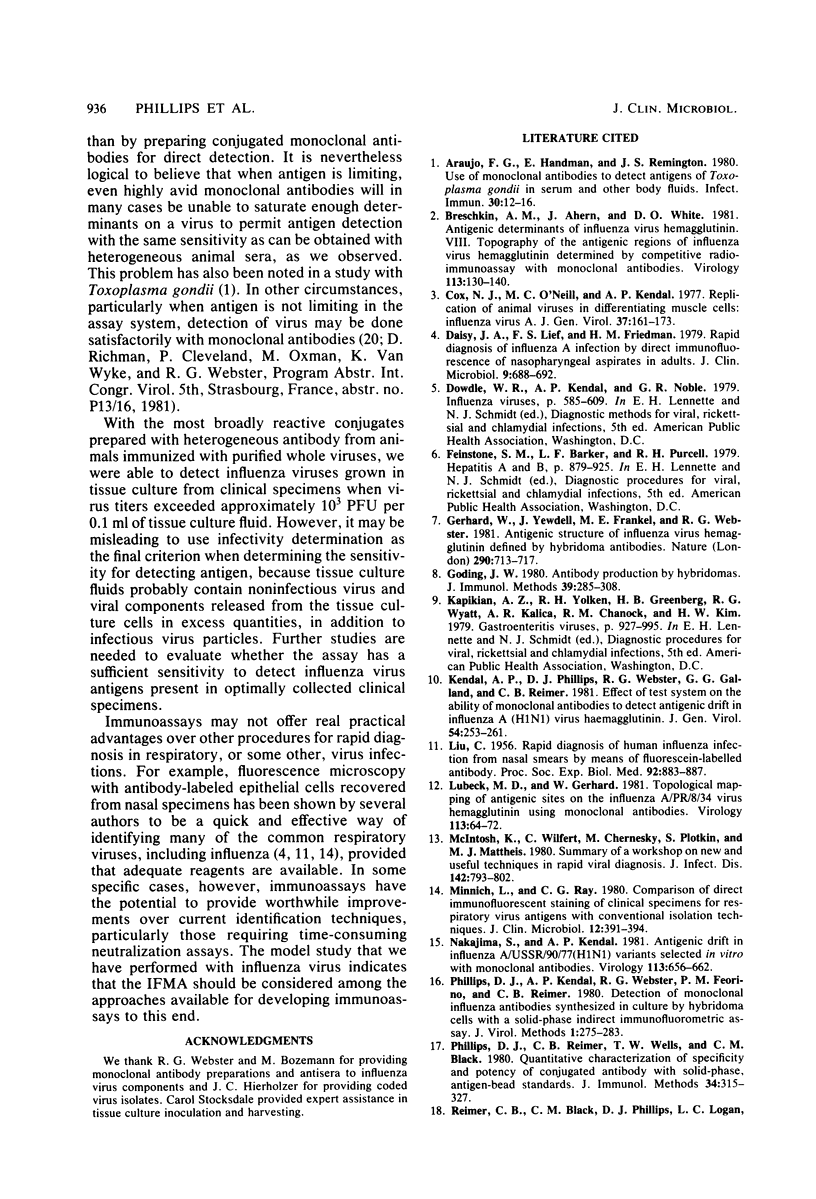
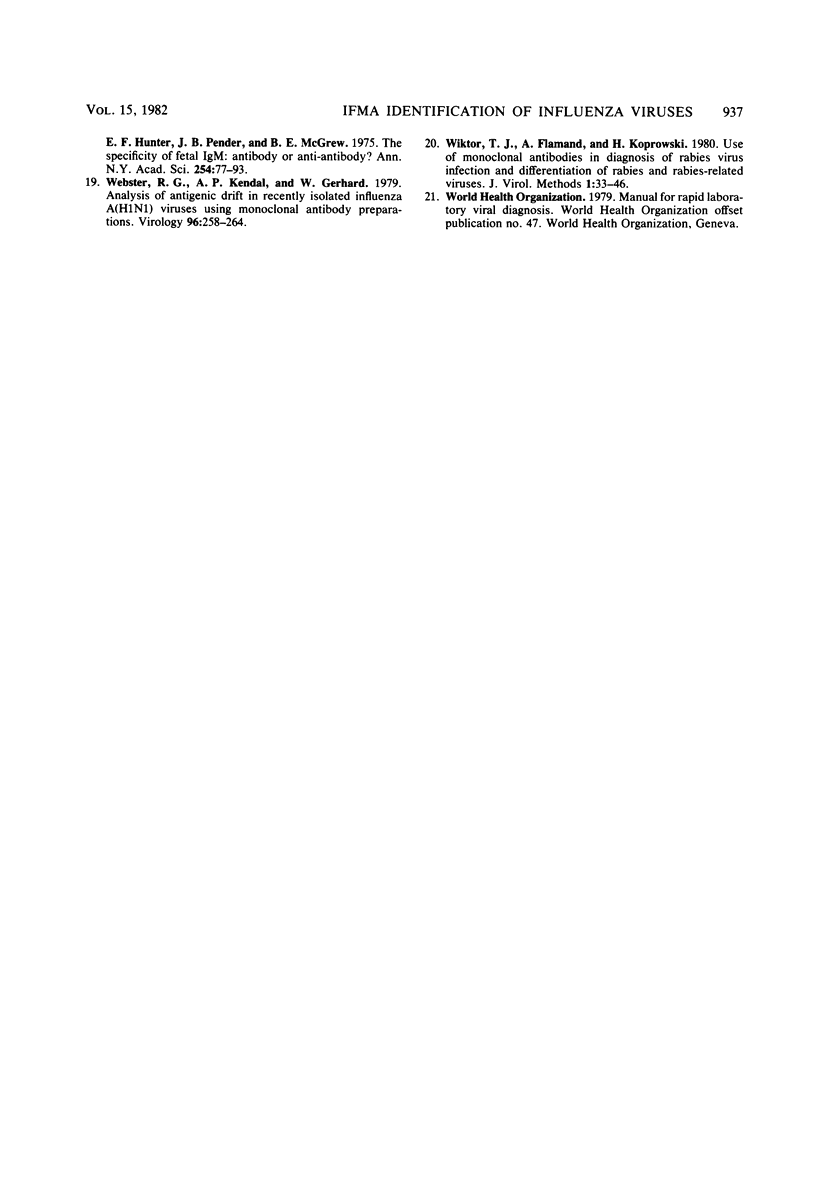
Selected References
These references are in PubMed. This may not be the complete list of references from this article.
- Araujo F. G., Handman E., Remington J. S. Use of monoclonal antibodies to detect antigens of Toxoplasma gondii in serum and other body fluids. Infect Immun. 1980 Oct;30(1):12–16. doi: 10.1128/iai.30.1.12-16.1980. [DOI] [PMC free article] [PubMed] [Google Scholar]
- Breschkin A. M., Ahern J., White D. O. Antigenic determinants of influenza virus hemagglutinin. VIII. Topography of the antigenic regions of influenza virus hemagglutinin determined by competitive radioimmunoassay with monoclonal antibodies. Virology. 1981 Aug;113(1):130–140. doi: 10.1016/0042-6822(81)90142-2. [DOI] [PubMed] [Google Scholar]
- Cox N. J., O'Neill M. C., Kendal A. P. Replication of animal viruses in differentiating muscle cells: influenza virus A. J Gen Virol. 1977 Oct;37(1):161–173. doi: 10.1099/0022-1317-37-1-161. [DOI] [PubMed] [Google Scholar]
- Daisy J. A., Lief F. S., Friedman H. M. Rapid diagnosis of influenza A infection by direct immunofluorescence of nasopharyngeal aspirates in adults. J Clin Microbiol. 1979 Jun;9(6):688–692. doi: 10.1128/jcm.9.6.688-692.1979. [DOI] [PMC free article] [PubMed] [Google Scholar]
- Gerhard W., Yewdell J., Frankel M. E., Webster R. Antigenic structure of influenza virus haemagglutinin defined by hybridoma antibodies. Nature. 1981 Apr 23;290(5808):713–717. doi: 10.1038/290713a0. [DOI] [PubMed] [Google Scholar]
- Goding J. W. Antibody production by hybridomas. J Immunol Methods. 1980;39(4):285–308. doi: 10.1016/0022-1759(80)90230-6. [DOI] [PubMed] [Google Scholar]
- Kendal A. P., Phillips D. J., Webster R. G., Galland G. G., Reimer C. B. Effect of test system on the ability of monoclonal antibodies to detect antigenic drift in influenza A(H1N1) virus haemagglutinins. J Gen Virol. 1981 Jun;54(Pt 2):253–261. doi: 10.1099/0022-1317-54-2-253. [DOI] [PubMed] [Google Scholar]
- LIU C. Rapid diagnosis of human influenza infection from nasal smears by means of fluorescein-labeled antibody. Proc Soc Exp Biol Med. 1956 Aug-Sep;92(4):883–887. doi: 10.3181/00379727-92-22642. [DOI] [PubMed] [Google Scholar]
- Lubeck M. D., Gerhard W. Topological mapping antigenic sites on the influenza A/PR/8/34 virus hemagglutinin using monoclonal antibodies. Virology. 1981 Aug;113(1):64–72. doi: 10.1016/0042-6822(81)90136-7. [DOI] [PubMed] [Google Scholar]
- McIntosh K., Wilfert C., Chernesky M., Plotkin S., Mattheis M. J. From the National Institute of Allergy and Infectious Diseases. Summary of a workshop on new and useful techniques in rapid viral diagnosis. J Infect Dis. 1980 Nov;142(5):793–802. doi: 10.1093/infdis/142.5.793. [DOI] [PubMed] [Google Scholar]
- Minnich L., Ray C. G. Comparison of direct immunofluorescent staining of clinical specimens for respiratory virus antigens with conventional isolation techniques. J Clin Microbiol. 1980 Sep;12(3):391–394. doi: 10.1128/jcm.12.3.391-394.1980. [DOI] [PMC free article] [PubMed] [Google Scholar]
- Nakajima S., Kendal A. P. Antigenic drift in influenza A/USSR/90/77(H1N1) variants selected in vitro with monoclonal antibodies. Virology. 1981 Sep;113(2):656–662. doi: 10.1016/0042-6822(81)90194-x. [DOI] [PubMed] [Google Scholar]
- Phillips D. J., Kendal A. P., Webster R. G., Feorino P. M., Reimer C. B. Detection of monoclonal influenza antibodies synthesized in culture by hybridoma cells with a solid-phase indirect immunofluorometric assay. J Virol Methods. 1980;1(5):275–283. doi: 10.1016/0166-0934(80)90024-5. [DOI] [PubMed] [Google Scholar]
- Phillips D. J., Reimer C. B., Wells T. W., Black C. M. Quantitative characterization of specificity and potency of conjugated antibody with solid-phase, antigen bead standards. J Immunol Methods. 1980;34(4):315–327. doi: 10.1016/0022-1759(80)90104-0. [DOI] [PubMed] [Google Scholar]
- Reimer C. B., Black C. M., Phillips D. J., Logan L. C., Hunter E. F., Pender B. J., McGrew B. E. The specificity of fetal IgM: antibody or anti-antibody? Ann N Y Acad Sci. 1975 Jun 30;254:77–93. doi: 10.1111/j.1749-6632.1975.tb29159.x. [DOI] [PubMed] [Google Scholar]
- Webster R. G., Kendal A. P., Gerhard W. Analysis of antigenic drift in recently isolated influenza A (H1N1) viruses using monoclonal antibody preparations. Virology. 1979 Jul 15;96(1):258–264. doi: 10.1016/0042-6822(79)90189-2. [DOI] [PubMed] [Google Scholar]


